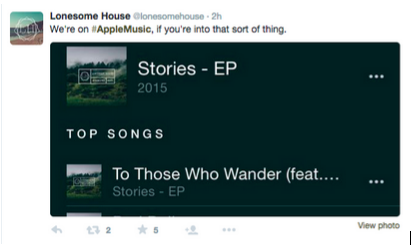hash·tag (n.)
A word or phrase preceded by a hash or pound sign (#) and used to identify messages on a specific topic.
Hashtags have gotten out of hand. People are making seventeen-word hashtags, adding in unusable characters, and including words that don’t actually exist. Tweeters and Instagrammers alike have a great disdain for Facebook hashtaggers, of which I am admittedly one. You get it. Hashtags are everywhere and it’s fair to say that some have lost touch with the correct way to create them, and perhaps never knew it in the first place. If you’re willing to embark on a great journey of deep wisdom and discovery, we’re going to have a hashtag overhaul.
If you missed our webinar, view it now:
Before we can dive into how to use a hashtag, we need to cover what hashtags are. When you go back to the basics, hashtags are really just a link. When someone uses a hashtag in a tweet or post, you simply click on the hashtag & it will take you to a live, running list of all posts related to that specific topic. For those of you new to the scene, Hashtags originated in information technology to denote a special meaning, and later to label certain topics.
Reborn in 2009, Hashtags made a new home on social media to group tweets related to a certain topic. They aren’t overly complicated and are absolutely useful. You simply place the pound symbol like so, #, and add a topic or word to the end of it. By inserting that into a tweet, insta, or post you can instantly connect with others who have used the same hashtag. There are proper and improper ways to go about this.
Proper Hashtag Usage:

Proper hashtags are simple, direct, and help group your tweet, post, or instagram into a category for others to find. For example: It was just a few weeks ago that Apple launched it’s new AppleMusic. Artists, fans, and internet trolls alike posted their comments to the web. By simply ‘hashtagging’ or searching #AppleMusic, I was instantly connected with thousands upon thousands of others who were speaking up about the new product. #AppleMusic worked as an effective hashtag because it was a topic well known and highly anticipated by many. It made sense for this to be a trending topic.
Other Ways to Hashtag:
For every up, there’s a down and using hashtags can spiral out of control quicker than you realize. Alright, so it’s not that big of a deal. For today, we’ll cover the three most common, accepted but incorrect ways to use a hashtag.

-
The Run-On Hashtag:
The run-on hashtag, while not that uncommon, obviously loses some of the hashtag categorization purpose. This is not to say that you can’t do that and that someone won’t find your post, but we’re talking about proper usage here. Having such a long and drawn out hashtag takes away from the topic itself. A better choice might be #BestWeekEver. This more limited, straight forward version says the same thing, but connected me with pages and pages worth of other tweets.

-
The Nonexistent Hashtag:
This refers to a hashtag you create and you alone are the one with posts on that topic. Clearly, not everyone has a dog named Rover, nor do they wish their pets a happy birthday on social platforms. If this is right up your alley, a better choice might be #HappyBirthday or #BirthdayDog

-
Hashtags Everywhere:
Lastly, and probably the most looked-down-upon of all hashtagging techniques – the hashtags everywhere. This typically comes from someone who is trying to over-connect and rack up on followers by having tweets and posts show up on as many different hashtag topics as possible. It’s effective in exposure, but drives some followers away. *User friendly but not user friendly. Better Choice: Research two or three top trending hashtags that have to do with what you’re talking about. That way, you still get ample exposure without losing followers in the process. Don’t forget you can access current trends on Twitter by viewing the column beneath your picture.
Now that the different ways to hashtag have been covered, it’s important to understand the best practices when it comes to using them.
- Don’t use Special characters – hashtags don’t recognize periods, commas, apostrophes, or anything of the like. *It’s okay to leave out punctuation in this case
- Don’t put spaces in your hashtag – hashtags don’t recognize spaces and anything placed after the space will no longer be accounted for.
- CamelCase – for those of you who don’t know, camel case is when you capitalize the first leader of each word. This makes it easier for people to read and understand your hashtag.
- Pay attention to trends – if you want you hashtags to count, read up on the latest trends and try to incorporate them into your tweets and posts.
- Hashtag with Care – Make sure you understand the context of what you’re tweeting. Just take it from Digiorno It’s easy to assume you understand the topic, and it be completely different.
Last but not least, we’re going to talk about Hashtag strategy. It’s okay to create a hashtag when you’re starting a new campaign or creating a business, just make sure that it’s branded and reflects your company/organization. The real magic happens when you pair these branded hashtags with generic hashtags, which gives you more exposure and allows people to find your new and awesome hashtag.
When used correctly, hashtags really are an effective tool to help you connect with people with similar interests. As with all social media engagement, follow the unwritten rules of which “less is more” is the most important. Aren’t convinced? Hear what Jimmy and Justin have to say.
Finally, hashtag what you know and what you actually care about and do not abuse the privilege. The internet thanks you in advance.

